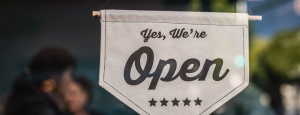Reprinted from the In-Store Marketing Institute
By Meg Kinney, The Integer Group
OAK BROOK, IL — Shopping is a game of clear winners and losers, with retailers assuming the role of “worthy challengers,” according to half of the participants in a new qualitative research study by The Integer Group. The other half viewed shopping as a personal journey of discovery and inspiration, with retailers serving as “trusted editors” who feature products that enrich our lives.
The study challenges the usual assumption that shoppers are task-focused when on routine shopping trips, said Meg Kinney, executive vice president of strategic planning for The Integer Group, during a presentation April 20 at the In-Store Marketing Summit. The reality is that many shoppers tap into deep psychological rewards when shopping, prompting Integer to characterize time spent shopping as “productive leisure.”
“When we talked to folks we realized that everyday shopping really is a hybrid activity,” Kinney said. “Yes, there’s task accomplishment, but there’s also a recreational component. It’s a little bit work and a little bit play.”
The year-long qualitative study, dubbed “An Exploration of America’s Relationship to Shopping,” recruited 32 “highly involved” shoppers in four markets: Des Moines, IA, Orange County, CA, Houston, and the Bronx, NY. The study examined everyday shopping behavior for products purchased or replenished at least once a month primarily through food, drug and mass channels.
Researchers audited store trips, compared shopping lists to receipts and collected more than 100 hours of in-home interviews. The team also did shop-alongs with video cameras attached to participants as they shopped the stores. The videos were played back to participants later, giving them a chance to share their thoughts and feelings at different points in the trips.
Most in-store messaging today is designed with the idea that shoppers are on a clear mission and that their personal lives are left behind when they enter a store, Kinney said. But that approach may be missing opportunities to speak to shoppers in ways that acknowledge the more emotional and rewarding parts of the shopping experience.
“Let’s all start thinking about all of these emotions — spontaneity, excitement — and start thinking of this as rich new territory that we can access when we sit down to develop in-store programming,” Kinney said. “What if the psychological rewards of shopping were the well that we drew from for the way we engage shoppers in-store?”
As researchers compiled interviews, two types of shoppers emerged as archetypes that help characterize their relationship to the shopping experience: shopping as “Muse” and shopping as “Master,” or challenging teacher. The two aren’t to be thought of as traditional shopper segments, but as models that provide a new context for developing in-store messaging, Kinney said.
Shopping muses value discovery and spontaneity in the shopping experience. Unplanned purchases are a given for them, and they assume the retailer is a trusted editor picking the assortment to spark new ideas. Their positive emotions peak when they’re actually in the store, and are lower during trip planning and unloading groceries afterwards.
Shopping masters are driven more by value and outcome, and their performance as a “good shopper” hinges on not making unplanned purchases. They assume the retailer is a worthy challenger that helps sharpen their skills at finding deals. Unlike muses, their emotions peak during trip planning and preparation, such as while clipping coupons or making lists, and at checkout, when they get their receipt and see how much they’ve managed to save.
Kinney urged audience members to consider which of the two models best describes the shopping environment and categories in which their brands are sold. Is enough being done to reward muses’ desire for discovery and spontaneity? Are masters being rewarded at checkout with messages that praise their performance and highlight their savings?
“The inspiration here is that the shopping relationship can be a whole new context for messaging,” Kinney said. “It could be a whole new way of looking at the existing tools in our toolbox.”
The study also found that participants believed the cumulative effects of their purchase decisions had the power to change the planet — for good and bad. Participants generally felt good about buying products touting cause overlays, sustainability and corporate responsibility, but only if the price premium for such products wasn’t too steep. The term “pragmactivism” comes close to describing the combination of responsibility and practical adherence to budget. Shoppers want help from retailers in picking “redemptive” products, Kinney said.
“Shoppers expect us to make shopping responsible,” Kinney said. “What if sustainability or responsibility becomes the new borrowed equity? What if we use sustainability or responsibility as a badge?”
Published: June 2007
Source: In-Store Marketing Institute

